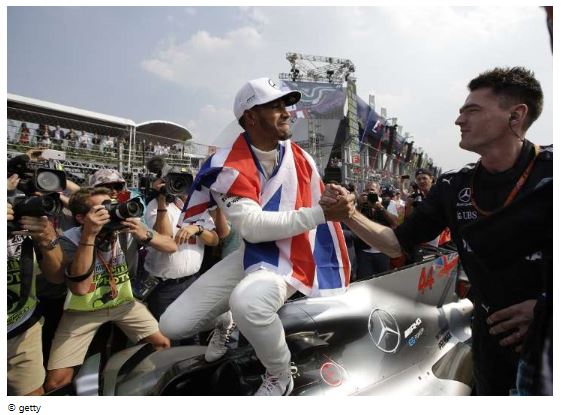It says something about the apparent inevitability of Lewis Hamilton winning his sixth world title this season that, after his worst performance for years, the Mercedes driver left the German Grand Prix with his championship lead actually slightly bigger than it was when he arrived.
And yet events throughout a remarkable race at Hockenheim on Sunday also underlined that nothing can ever be taken for granted in Formula 1.
Who would have predicted as Hamilton came into the pits for fresh tyres after leading comfortably for the first 28 laps that he and Mercedes were about to embark on a series of errors so uncharacteristic for a team that had until then made everyone else in F1 look second rate this year?
Within 20 laps, Hamilton was down in 12th place and asking his team: “How’s it gone this bad?”
Five laps after that, Hamilton was spinning at Turn One, making another pit stop and rejoining in last place.
It looked a golden opportunity for his team-mate Valtteri Bottas – then running fourth but with a Toro Rosso and a Racing Point just ahead – to carve chunks out of Hamilton’s lead and reignite his own fading title hopes. Only for the Finn to crash heavily at the same corner.
Then four hours after the end of the race, Alfa Romeo’s cars were demoted out of the points for a technical infringement, and Hamilton promoted to ninth. And so the world champion left Hockenheim, after what he described as “one of the worst weekends I can remember”, with his
advantage extended to 41 points.
Hamilton, who was still feeling the effects of the illness that earlier in the weekend had left him wondering whether he would even be able to compete, looked in total control for nearly half the race.
Slowly pulling away from Bottas behind him, with Red Bull’s Max Verstappen pressuring the Finn but unable to pass, and Ferrari’s Charles Leclerc looking dangerous but manageable in fourth, it appeared Hamilton’s to lose. And then lose it he did. But not before Leclerc had done the same.
Lap 25 – with the track drying, and tyres wearing out, but rain still falling – was an agonising moment for drivers and strategists alike.
Verstappen stopped for dry-weather tyres, only to spin on them in the stadium on his out lap but manage to keep going.
Backmarkers who had done the same were starting to show signs of going quicker, so Ferrari called in Leclerc on lap 27 for slicks – choosing the softs for best grip rather than the mediums Red Bull had given Verstappen, much to the Dutchman’s chagrin.
A lap later, Hamilton also pitted for slicks, and so began the chain of events that unravelled his race.
As Hamilton pitted, Leclerc slid into the run-off area at the penultimate corner. The 21-year-old had gone wide there twice before. But this time, on slick tyres on a damp track, he went further in, and discovered a surface that looked like it had been washed with soap suds.
The result gave the impression of an F1 car that had just encountered a kids’ slip-n-slide, and Leclerc slid helplessly into the gravel and out of the race, having looked like he might be able to challenge for the lead, Ferrari’s strategy decisions all bang on up to that point. The safety car was
deployed.



